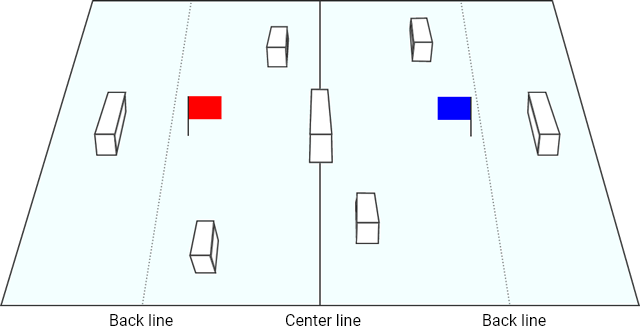The Game of Yukigassen Explained
We explain the strategic game of Yukigassen
Yukigassen: a battle of strategy, teamwork, skills, and of course- snowballs!
In some parts of the world, men and women gear up in helmets and head out to the cold, snowy grounds. You may ask why? To prepare for a battle that they call "Yukigassen."
The name “Yukigassen" is derived from two words: "Yuki," which translates to snow, and "kaseen," which translates to battle. As the name suggests, Yukigassen is a snowball competition that originated from Japan. The game has since been introduced in Norway, Australia, Sweden, and Canada.
Will we ever se it become part of the Olympic Winter Sports setup? Possibly not but would be extremely fun to watch!
History of Yukigassen
Yukigassen started off as a way to entertain and energise the community of Sobetsu during the long and cold winters. Later, it was not only recognised by the people of Japan as an official sport, but people from all over the world started taking part in it as well.
In 1989, helmets and snowball makers were made, and in 1998 the Yukigassen rule committee was officially formed.
The first Annual Showa Shinzan International Yukigassen was held on 25-26 February and more than seventy teams participated in the tournament.
In 1991, the first women’s division tournament was held, and in 1992, the first Yukigassen event outside Japan took place in Australia. In 2010, Yukigassen joined the 65th winter national sports festival as an official sport, and in 2018 the 30th official event was held on 24-25th February.
How is Yukigassen Played?
Even though this sport has developed over the years, ever since it was established in the late 1980s, the official rules for this game haven’t changed.
This says a lot about the game itself, as it is uncommon for any sport to keep the same rules from the very start. Yukigassen seems to be an "untouched” game across the decades.
The game is a team sport which is played between two teams. Each team has seven players on set. The game is played on an outdoor court that has a specially-designed ice surface. The court includes small wall-like barricades, and these barriers are used by the players to secure themselves from being hit by the snow. Most of the barricades are made from snow by the players.
Each player is given helmets and gear such as gloves so that they can protect themselves from injury. Each team has a flag that is placed on the side of the opposing team. The players must capture the opposing team's flag. The team which captures the opponent's flag first, or the team which has eliminated more players of the opposing team with the snowballs, wins the set. Each set lasts about three to five minutes. The first team to win two sets is considered the winner of the match.
For each match, both teams must use ninety snowballs. The snowballs are made 15 minutes prior to the start of the game. Before the game begins, players from each team pick two snowballs and wait. When the game begins, players start throwing snowballs towards the opponent.
Within a team, there are two positions:
Offensive position
Defensive position
Players who are on the offensive position strike the opponent's team with snowballs, while the players that are on the defensive side support the offensive team by bringing more snowballs.
If a snowball hits a player, that player is considered out of the game. If the player picks a snowball from outside the court, or if the player themselves moves out of the court, it is considered a foul, and they are also eliminated from the game.
A Yukigassen Court
Equipment to Play Yukigassen
The two main pieces of equipment needed to play Yukigassen are:
Snowball Maker: the Snowball Maker is a piece of plastic equipment that consists of a circle-shaped box. It takes approximately 45 snowballs at a time. The players must make snowballs 15 minutes prior to when the game begins. The reason players cannot make their own snowballs is that they might make them too big or too small, and it would be unfair to win the game this way
The court: The court is usually a rectangular-shaped area that measures about 36m long and 10m wide. The shelter that players hide behind to protect themselves measures 180cm long, 45cm wide, and 90cm in height. Usually, shelters are made from snow
Notable Tournaments
World championship: Sobetsu, Hokkaido, Japan
European championship: Kemijarvi, Finland
Swedish championship: Lulea, Norrbotten, Sweden
Nordic championship: Vardo, Finnmark
Australian championship: Mount Baw Baw
Anchorage: Alaska, U.S.
Russian championship: Murmansk, Russia
Champions League of Yukigassen: Aparan, Armenia
Final Word on Yukigassen
Japan is a place where communities are tightly knitted together. Around the world, the harmony and solidarity of Japanese people is something which is greatly known and admired. The game of Yukigassen itself gives us a glimpse of the strong sense of unity which the Japanese people exhibit.
Yukigassen is a mixture of dodge-ball, paintball, capture the flag, and rugby- but with a snowy twist. Over the past few years, Yukigassen has become the perfect sport for friends, classmates, and even co-workers.








